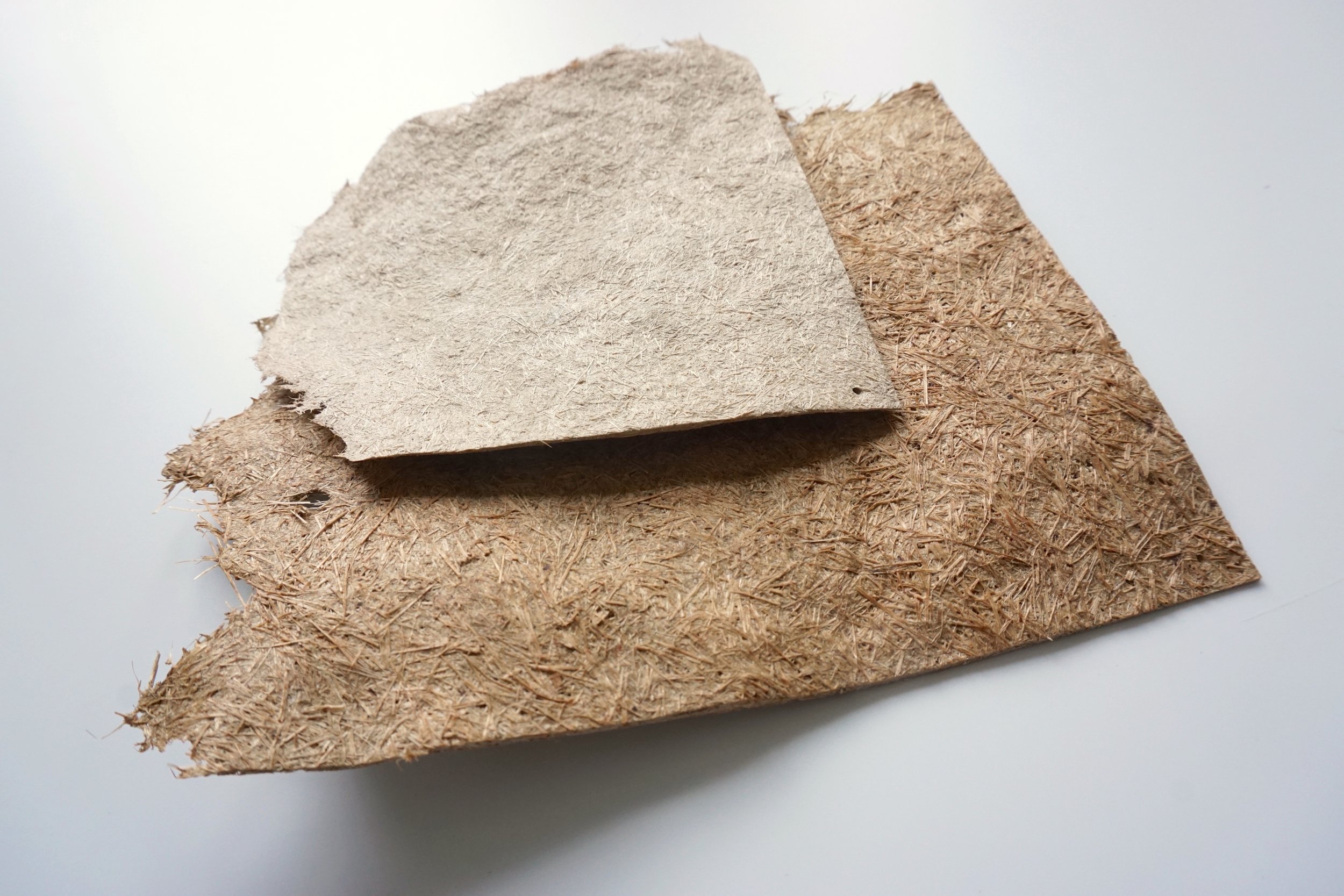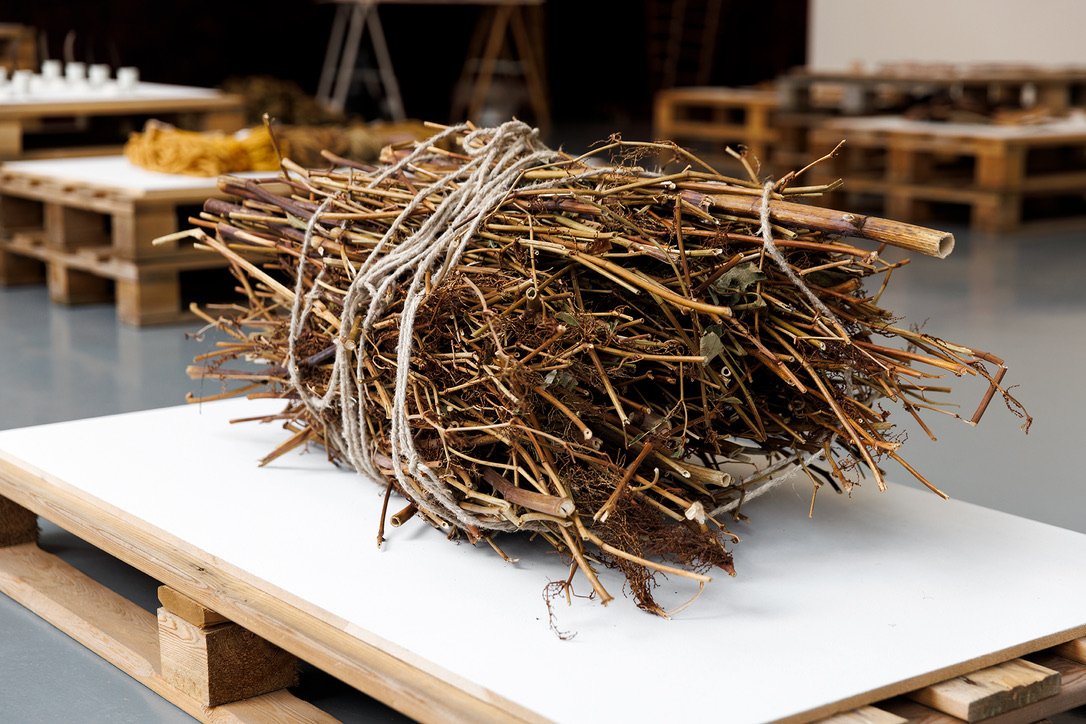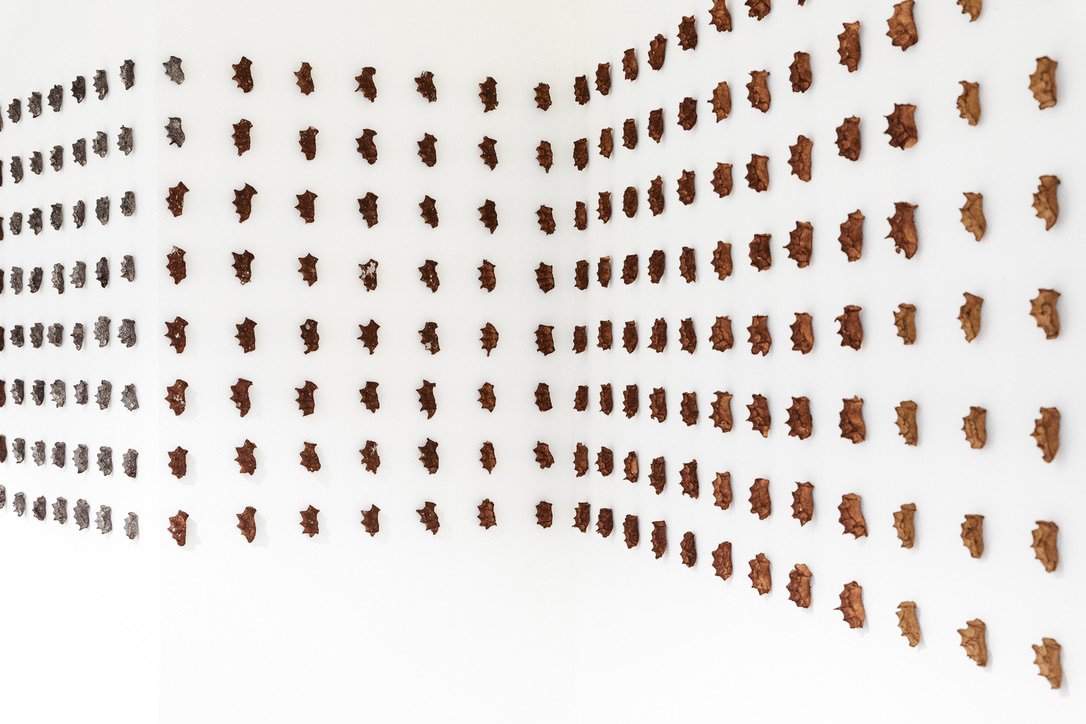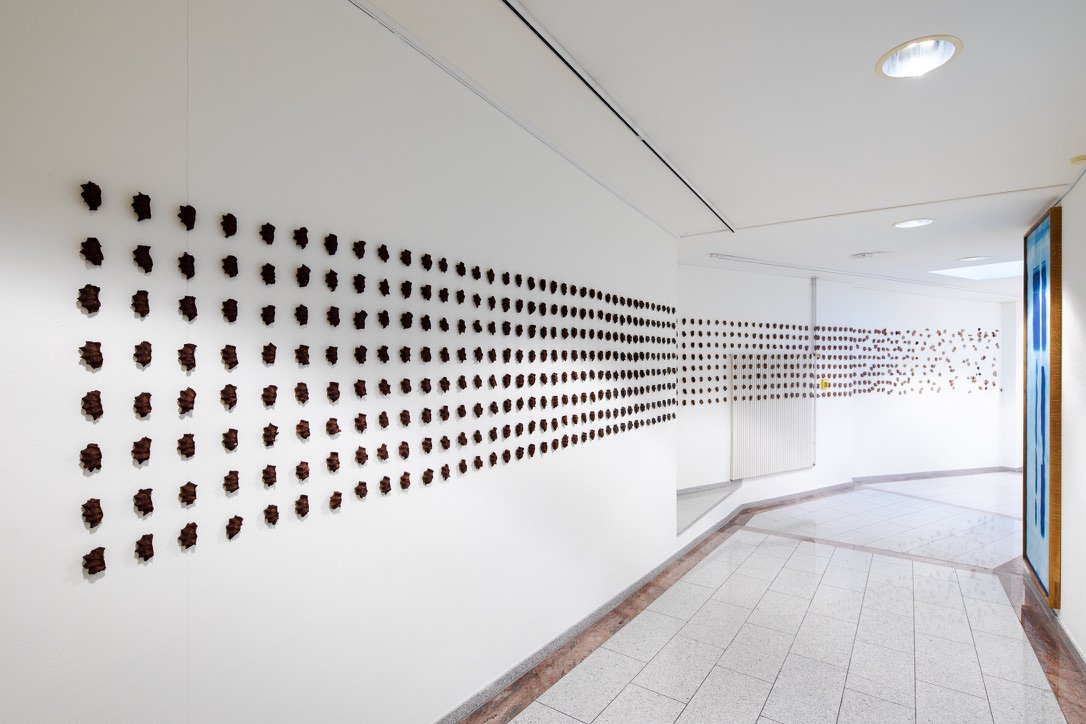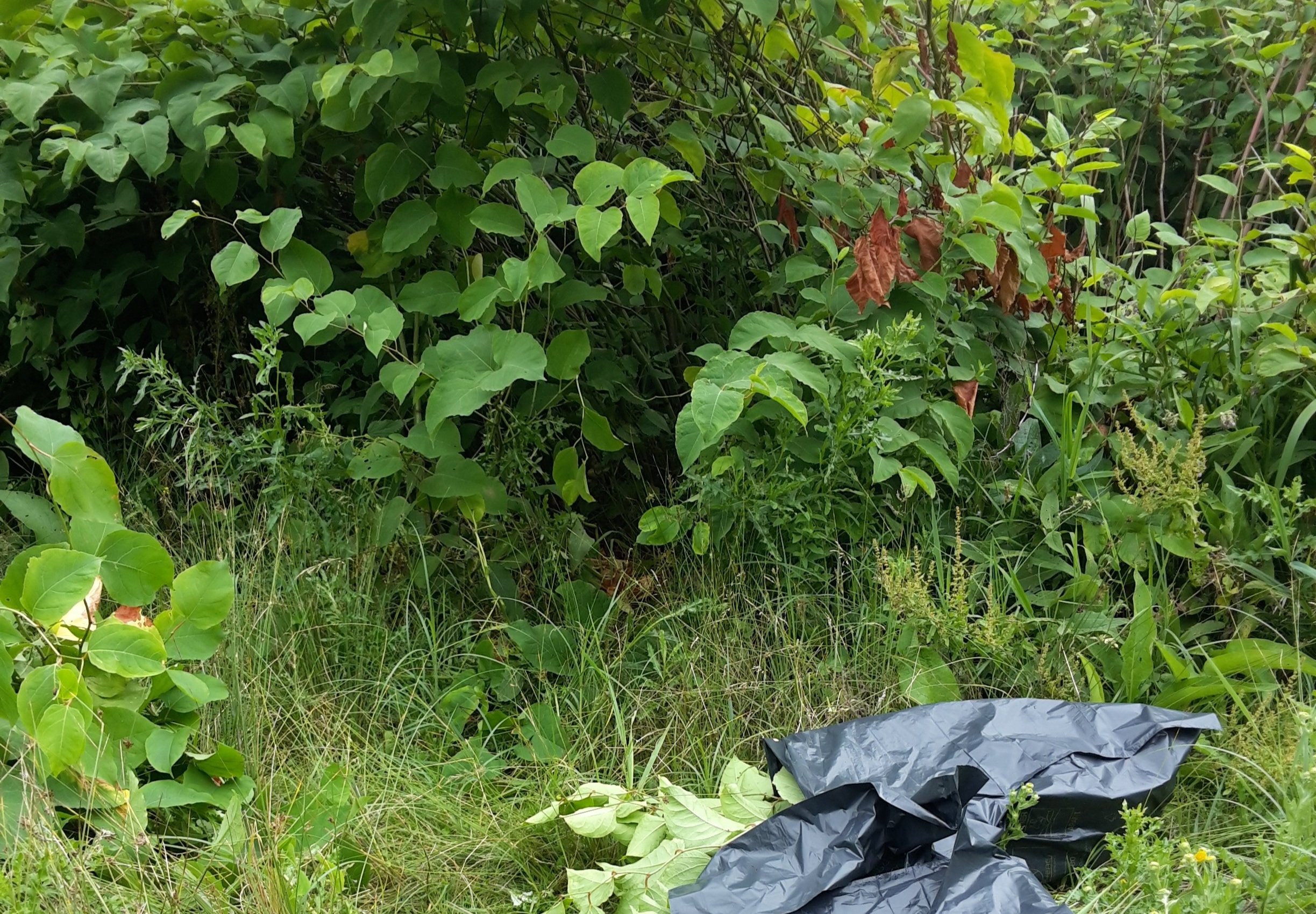
Around 2010, for ecological reasons, I decided to change my approach to materials. I started working with what could be found in my immediate environment and renounced synthetic substances. The materials I found also formed the source for content research. Today I work mostly with natural materials, such as the Japanese Knotweed I discovered in the garden of my studio.
How I fell love with the enemy
Japanese knotweed in-depth research
Like 80% of all plants, Japanese knotweed is edible. Mainly the young shoots are consumed. So the question was, especially for a Frenchwoman, is it tasty?
I often eat wild plants and I usually find them tastier than our supermarket food, but in this case I was not convinced. In my opinion, the best way to consume Fallopia japonica is by making kombucha with it.
I wanted to get to know this plant. I researched its history and behavior, and tried to uncover the plant's properties by working it into a range of materials.
To produce the materials, the number of added substances was kept to a minimum.
The chemical processes developed organically. In other words, without precise interventions when it came to time, temperature or pH. Simply waiting for the process to be completed.
Japanese knotweed rhizome preparation for color extraction.
Colours
The world of plant dyes is fascinating. Perhaps because plants can't see the colours. We're all familiar with the beautiful colours of flowers, which serve as signals to insects. But colours can also be hidden in stems and roots.
For the plants, the molecules responsible for these colours are both a Swiss Army knife and a pharmacy! They act as antioxidants, antibiotics, toxins or insecticides.
As Japanese knotweed is a plant that adapts easily to its environment, I was not surprised that numerous studies on Japanese knotweed show that it has medicinal virtues. Japanese knotweed, for example, is a rich source of reservatrol (known as the molecule that makes red wine beneficial to health).
Thanks to these studies, I have been able to identify possible colouring molecules in Fallopia japonica. However, the quantity of these molecules and the relationships between them were more difficult to determine.
Pigments from Japanese knotweed rhizomes.
I tried to extract pigment from different parts of the plant and with a variety of extraction methods. The conclusion of these tests was that only the roots gave a usable pigment.
Inks made from Japanese knotweed leaves and rhizomes, iron citrate and acetate.
The inks are applied to two identical sheets of papers to compare them after light exposure.
Alkaline extraction of Japanese knotweed rhizomes on paper.
pH neutral extraction of Japanese knotweed rhizomes on paper.
Wool mordanted with stems of fresh Fallopia japonica, according to a Tibetan recipe found in Dominique Cardon's book ‘Le monde des teintures végétales’. The wool was then dyed with fresh roots of the plant, in a pH neutral extraction and an alkaline extraction. The samples were then dipped in several post-baths.
Experiments made under the guidance of textile dyeing expert Michel Garcia, during the course 100% plant-based wool dyeing.
Fibers
Fallopia japonica is a large, fast-growing grass. It can grow three feet tall with a growth rate of five centimeters per day.
To do this, it uses its roots, which contain considerable reserves and it produces a lot of lignin. Lignin is the second most abundant organic material on earth after cellulose. Lignin “makes” the wood by binding the cellulose fibrils and other substances present. This binding kills the outer cells of the trunk. Because lignin makes so many different bonds, it is also very difficult to break down.
Paper is often made from wood, which contains both cellulose and lignin. The presence of lignin in paper pulp makes the material rigid and cardboard-like. In nature, only certain mycelia can perform this task. The paper industry uses many chemicals for this purpose.
The material made here from Japanese knotweed is not lignin-free: thus, it is a form of cardboard. For convenience and because of the thinness of the final product, it is still called paper.
To shape them, the stems first need to be soaked in water.
A selection of pulps made from Japanese knotweed stems and leaves.
The pulps are prepared according to various processes, such as freezing the plant first or boiling it in an alkaline solution before grinding.
Paper made with the pulps seen above. The variation in treatment and material (amount of stems or leaves) causes the big differences in colors.
After freezing the plant, the pith and long fibres of the stems are easily removed.
This operation releases the plant's epidermis, which is more flexible than the rest of the stems components. This has been used here to make a laminated material.
This freezing operation is also needed to make rope.
Different paper pulps in halved stems. The stems are used as a mold to show the differences in the shrinkage factor for each paper pulp.
Rope of Japanese knotweed leather. Plant leather is obtained by soaking the epidermis of the plant stems in glycerine.
Cardboard-like material from Japanese knotweed stems.
How I fell love with the enemy
Presented
Sustaining Small Acts
TENT, Rotterdam 2023
Pictures bij Aad Hoogendoorn
Investigations
Goethe Institut, Rotterdam 2023
Pictures bij Jacqueline Fuijkschot
How I fell in love
with the enemy
in-deph research publication



















